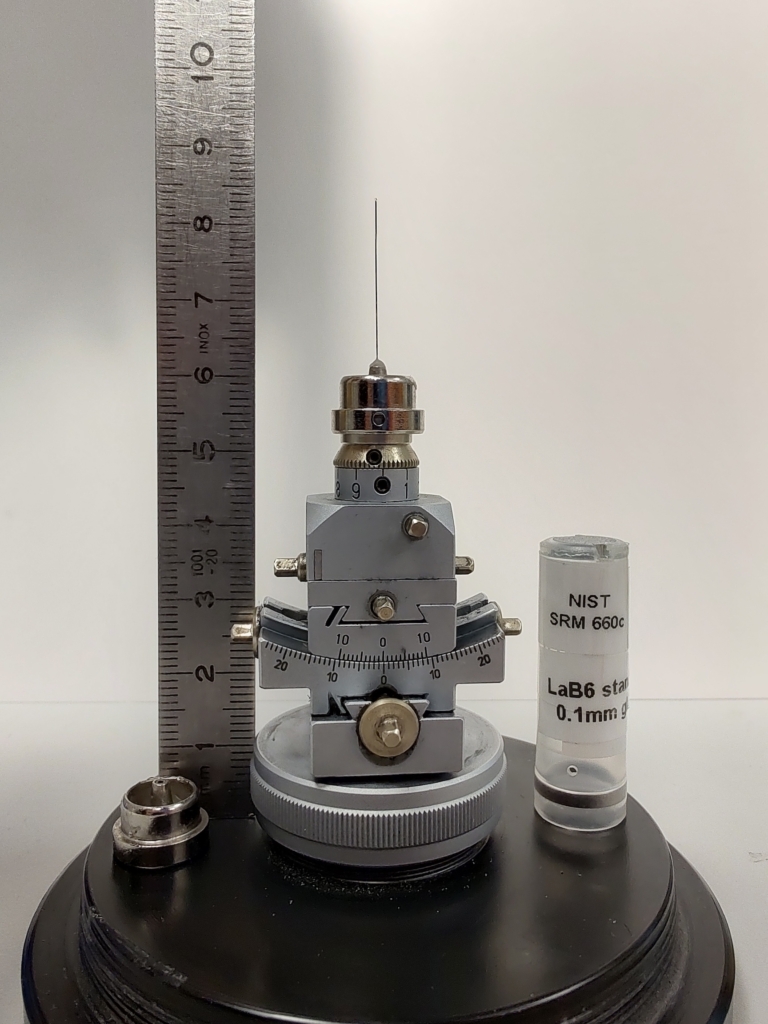At DanMAX we have successfully used CrystalCap SPINE HT (Hampton Research HR8-112) for PXRD capillary experiments, but other vendors (e.g. Mitegen or Molecular Dimensions) have similar products.
The hexapod allows for flexibility when aligning the capillary to the beam position and allows the beam to intersect the capillary all the way from the top of the base and up to 50 mm along the capillary. However, it is highly recommended to prepare all of your samples with the same length.
The recommended length of the capillaries are approximately 25 mm from the top of the base (this will allow the use of the protective SPINE caps as well). If the capillary will be used with the Cryostream positioned co-axially the capillary should be longer to limit the cooling of the base and goniometer head.

The diameter of the capillary used will directly influence the peak broadening, and thus, we recommend using the smallest capillary diameter possible. The maximum beam size is around 1 mm, and thus, larger capillaries do often not make sense at DanMAX.
Several other have made tutorials on how to fill capillaries, e.g. here:
https://www.youtube.com/watch?v=cjunmiSw2hM
and
https://www.youtube.com/watch?v=vAdi5cTypbY.
These tutorials use capillaries with a large diameter, which are relatively easy to fill – filling a thin capillary will be more challenging!
For the experiment, you only need to fill a few millimeters of the capillary with the sample, however, it is preferred to fill a bit more as this will help keep the sample in place and not move out of the beam.